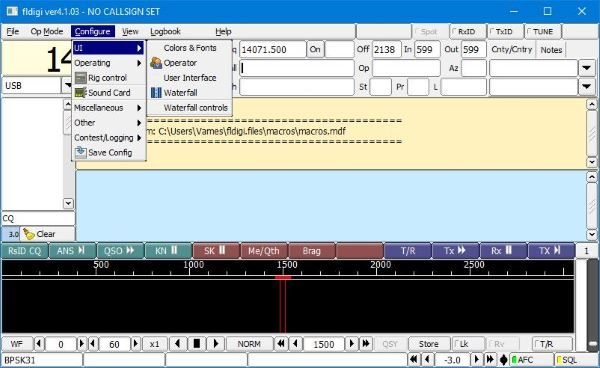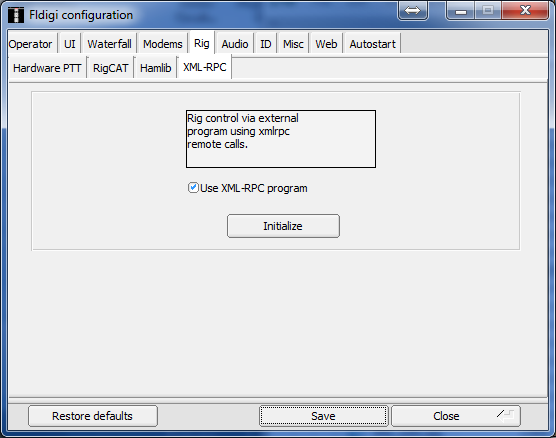

- #FLDIGI INTERFACE SERIAL NUMBERS#
- #FLDIGI INTERFACE SERIAL NUMBER#
- #FLDIGI INTERFACE FULL#
- #FLDIGI INTERFACE SOFTWARE#
Enter the operator's call (if different).

The field day station station callsign is your fldigi user callsign. The log fields and associated Rx Text popup menu changes to appropriate fields when the Field Day check box is enabled on the contest configuration tab: Some VHF contests allow a duplicate CALL after a given time interval. You can also specify that the duplicate had to occur within a given time interval. You can check for duplicates by any combination of the specified named fields.
#FLDIGI INTERFACE SOFTWARE#
The import/export feature of fldigi will allow you to export the log into your everyday logging software or the built-in fldigi logbook. You can rename the new log file now or later by using the system file manager or when you save the log. The default new log name will be newlog.adif on Linux and newlog.adi on Windows. You create a new log by selecting the menu item File/Logs/New logbook. It would be best to create a new log for each contest. You should also press the QSO clear button (broom) in the QSO entry widget for the other changes to take effect.
#FLDIGI INTERFACE SERIAL NUMBER#
Remember YOU MUST click the Reset button in the Serial number panel for the serial number counter to be initialized. The DUPE is cleared when you press the clear QSO log button (the brush icon).Īfter you have filled in all the required information, make sure you save and close. The duplicate is based on the logical AND of all of the fields to be checked. There are many choices to alert you to a duplicate contact. Pressing this button opens a color selector so you may customize the color. If a duplicate is detected the Call entry will be highlighted as shown in the "Dup Color" button. Press reset to initialize the #Out QSO field to the Start number.Ĭheck the appropriate fields for determining if this is a duplicate call. You will always want to use leading zeros, start with 1 and use 3 digits.

#FLDIGI INTERFACE SERIAL NUMBERS#
The next box contains the needed requirements to use serial numbers for a contest. The cut numbers will send N for 9 and T for zero. Numbers", cut numbers is the norm for a CW contest. If you are participating in a CW contest you may want to select the "Send CW cut You will also need to check the RST always 599 box as this is the de-facto signal report in contests. The contents of this field are accessed from a macro with the tag. ie.if the contest requires RST and name you would fill in the Exchange Out box with your name. The Send Xchg control is the text you want the appropriate macro tag. Set up the Generic contesting on the UI/Contest tab. You can very rapidly fill in the serial number and the exchange data (even if multi value) by simply pointing and right clicking on the desired word. You do not need to highlight the text for the word capture. That means you can point to the word representing the field, right click and select from the menu.

If the Xchg field has text contents then the new capture is appended to end of the current text in that field. The Xchg capture can be either single word or multiple word (mark / right click). The important thing to note for contest operation is that the Call and Serial # are single word captures.
#FLDIGI INTERFACE FULL#
A full description is found in the description of operating the Logbook. Note that the popup menu changes with the QSO logging view and also with a change in "Quick entry". Make your selection and the info is placed in the correct text box. Text in the Rx pane can be selected by mouse left-click / right-click. You can enter the appropriate exchange information via the keyboard or mouse. The serial number out (#Out) is automatically initialized and updated by the built-in serial number generator. Select the contest type from the Contest combo: Contesting with fldigi's built-in logbook


 0 kommentar(er)
0 kommentar(er)
